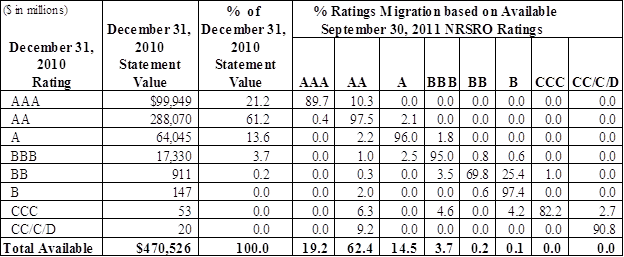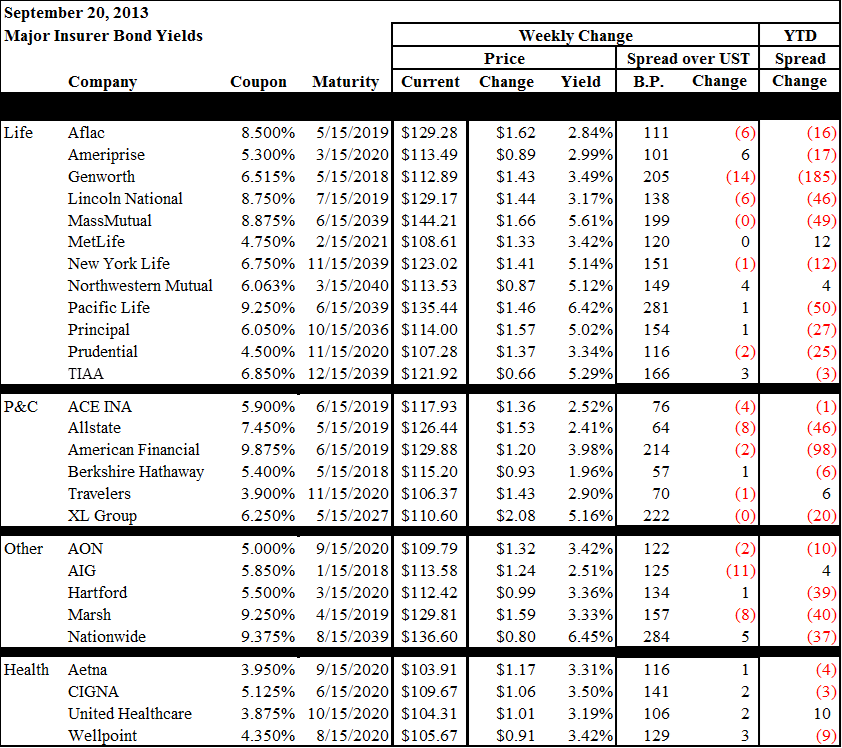NAIC Capital Markets Weekly Special Report
Post on: 13 Май, 2015 No Comment

Insights into the Insurance Industrys Derivatives Exposure
Derivative instruments are reported in Schedule DB of the quarterly and annual financial statements of insurance companies. In 2010, Schedule DB was revised to be more streamlined and yet provide more detailed and useful information regarding an insurance companys derivatives exposure and activity. Part A provides positions and activity in options, caps, floors, collars, swaps and forwards. Exposure to, and activity in, futures contracts are reported in Part B. Part C provides positions and activity in replication (synthetic asset) transactions. And, finally, counterparty exposure is reported in Part D.
Insurance companies are required to report all open derivative positions on an individual transaction basis at the end of each reporting period, either quarterly or annually. In addition, intra-period derivative transactions are reported on an annual basis. Therefore, if a derivative instrument was bought or sold and terminated within the same year, this activity would be captured. Schedule DB includes basic information, such as a description of the derivative instrument, the notional amount, the fair value, the maturity date and the counterparty for each individual transaction. It also provides useful information with respect to derivatives that are used for hedging purposes, such as a general description of the asset or risk that is being hedged, a reference to the specific schedule where the hedged asset is reported in the statement, and a quantification of the effectiveness of the hedge at inception and at the end of the period.
In general, insurance companies use derivative instruments to manage and mitigate a variety of risks. As of Dec. 31, 2010, a total of 223 insurance companies participated in the derivatives market. Of this number, 140 were life insurance companies, 63 were property/casualty insurance companies, 14 were health insurance companies and 6 were fraternal insurance companies. The insurance companies with derivatives exposure were domiciled in 39 states, with New York, Connecticut, Michigan and Iowa having the largest exposures. Furthermore, there were approximately 48,600 individual derivative positions across the insurance industry. The average position size was approximately $18 million in notional value, and the largest single position noted was $6 billion in notional value. This large derivative position was a macro-portfolio hedge to manage interest rate risk.
The NAIC Derivative Instruments Model Regulation (#282) sets standards for the prudent use of derivative instruments by insurance companies. It requires insurance companies to establish written guidelines for transacting in derivative instruments. Internal control procedures must also be outlined describing elements such as the monitoring of derivative positions and the credit risk management process. These guidelines and procedures are typically set forth in a derivatives use plan.
This special report provides basic information on the insurance industrys derivatives and counterparty exposure. The NAIC Capital Markets Bureau expects to conduct further analysis of the data and information provided in Schedule DB and will provide more in-depth insights in the near future.
Derivatives Exposure
As of year-end 2010, the notional value of over-the-counter derivatives i.e. options, caps, floors, collars, swaps and forwards reported in Part A of Schedule DB held by the insurance industry totaled $850.4 billion. This was a 2.1% decrease compared to year-end 2009, when the insurance industry held $868.7 billion in notional value of derivatives. According to a market survey conducted by the International Swaps and Derivatives Association (ISDA), the total notional amount outstanding of over-the-counter derivatives as of June 30, 2010, was $466.8 trillion. The insurance industrys exposure to over-the-counter derivatives is merely a fraction (0.18%) of the overall market.
Life insurance companies are the primary users of derivative instruments in the insurance industry, representing 93.4% of the total notional value outstanding. Insurance companies use derivatives to implement investment and portfolio strategies, such as hedging, replicating assets and generating income. Title insurance companies have no derivatives exposure.
Although the market typically refers to notional values when referring to derivatives, it does not indicate the true economic exposure that an insurance company might face. The NAIC also focuses on potential exposure that is a statistically derived measure of the potential increase in derivative instrument credit risk exposureresulting from future fluctuations in the underlying interest upon which derivative instruments are based. For example, for collars, swaps (other than credit default swaps) and forwards, the potential exposure is calculated using the following formula:

0.5% x notional amount x square root of remaining years to maturity
The following table provides the insurance industrys potential exposure as a result of the derivative instruments held as of year-end 2010. Potential exposure for over-the-counter derivatives totaled $20.3 billion or 2.4% of the notional value. Potential exposure for futures totaled $1.1 billion or 6.9% of the notional value.
Counterparty Exposure
Counterparty risk is the risk faced by a party that the other party will not satisfy the obligations of a derivatives contract. Insurance companies face counterparty risk primarily when entering into derivatives contracts that are traded over-the-counter, such as options, swaps and forwards. Although futures are traded through exchanges and cleared through a central clearinghouse, counterparty risk still exists but is considered to be minimal.
The following table summarizes exposure in notional value to the 10 counterparties mentioned above. Similar to the derivatives market in general, counterparty exposure in the insurance industry is concentrated in a small number of financial institutions. The 10 counterparties listed in the table represent 76.4% of the notional value outstanding in the insurance industry. Deutsche Bank was the largest counterparty to the insurance industry, representing 10.6% of the industrys total notional value outstanding as of year-end 2010. JP Morgan Chase and Barclays Bank were the second- and third-largest counterparties, with 9.0% and 8.7%, respectively, of the notional value outstanding.














